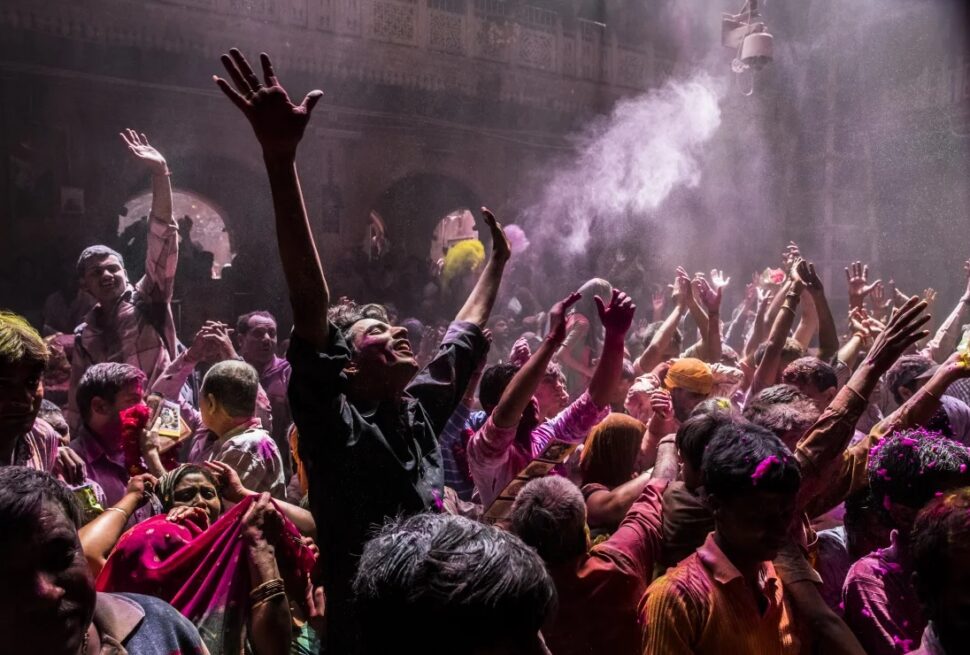India is one of the favorite destinations when embarking on a big adventure, but it is often rejected due to its extreme poverty and dirt but we Delighted Journey tell you more about India through India Travel Guide.
Chaotic, dirty, bad smell, poverty… these are some of the words with which India is told before visiting it, but we want to let you know that the country goes further and offers a thousand positive aspects that will leave you captivated. love.
In India you will find dreamlike landscapes, a very different culture, friendly people with big smiles in every place you visit and delicious food. This country surrounds you in such a way that in a few days you will make it yours like no other.
However, do not imagine a country that is easy to get along with, its noises, its smells or the presence of poverty, it is not made for everyone and this is one of the aspects that This must be taken into account before getting started. the trip.
In this India travel guide you will find all the necessary information you need to know before visiting the country and our tour. We have been traveling the country for 2 months in total, at a leisurely pace and by public transport.
Is it safe to travel to India by India Travel Guide?
This is the question we all ask ourselves when we think about traveling to India. In our experience we never felt unsafe, in fact they were very helpful on several occasions. We believe that, as in all countries we visit, avoid going out at night and don’t be so naive.
As a woman, is it safe to travel alone?
We get asked this question a lot on Instagram, and my experience as a woman, I told all my friends several times that I wouldn’t mind going back to India alone, because I had good feelings. On some occasions I felt uncomfortable because of prying eyes, but these moments do not differentiate it from other countries.
BEST TIME TO VISIT INDIA
In India it is usually very hot, too hot! which can be unbearable to get to know the country well.
What you should first know is that India has three main seasons: hot, monsoon and cold.
Believe it or not, the cold season is the best time to visit India. This runs between the months of November and March, and there is a low probability of rain.
From April to June, it is the hottest time and the one we least recommend to visit southern India, but it is the best to visit the high and cold areas of India, the Himalayas.
And from June to October is the monsoon season, where there is a high probability of rain. This monsoon season occurs in different ways in the country. The summer monsoon (in July) begins in the south of the country.
On the other hand, the winter monsoon begins in the north of the country. Passing through Siberia to the Himalayas between the months of June to September.
We have traveled to the country in the month of January and February, and in areas like Delhi, Agra and some cities in Rajasthan it was very cold at night. Even so, it was the perfect temperature, we don’t want to imagine what it would be like with so much heat, the perfect and real Information by delightedjourey.com in India Travel Guide.
OUR ITINERARY FROM NORTH TO SOUTH in India Travel Guide
NORTH INDIA:
New Delhi (3 nights)
Mathura (1 night)
Agra (2 nights)
Varanasi (2 nights)
Jaipur (3 nights)
Pushkar (2 nights)
Jodhpur (2 nights)
Jaisalmer (3 nights)
Udaipur (2 nights)
SOUTH INDIA:
Mumbai (1 night)
Goa (6 nights)
Hampi (2 nights)
Mysore (2 nights)
Coimbatore (1 night)
Munnar (3 nights)
Thekkdy (2 nights)
Kochi (2 nights)
Alleppey (2 nights)
Varkala (3 nights)
Monroe Island (1 night)
Kolavam (2 nights)
Punducherry (2 nights)
Chennai (2 nights)
As you can see in the itinerary, we have spent 2 nights in almost all the places. We think that they are enough to know the main thing about each corner, even so if your itinerary is shorter, the places that are essential from our point of view in northern India are: Delhi, Agra, Varanasi and Jaipur.
Our must-sees in South India are: Goa, Munnar, Varkala and Backwaters Alleppey.
Do you want more detailed information about some of these places? We leave it all here for you!
How to get from Delhi airport to the center
12 things to see and do in Delhi
What to see in Mathura in 1 day
What to see and do in Agra in 2 days
Tips before visiting the Taj Mahal
Rajasthan travel guide
Varanasi in 2 days
TRANSPORT
Traveling around the country by public transport is not difficult at all, since despite having good connection service between its main cities, the routes are usually very exhausting.
BUS: it is the way we have moved around the country the most, in addition to being one of the cheapest. We traveled at night on night buses to save time during the day and of course money. The buses are very well connected and there are departures to all the main cities. The cheapest are the government public ones, which we do not recommend for very long journeys since they tend to get very crowded and make many stops. There are private companies that do the same tours at a slightly more expensive price and you travel in better conditions. We bought the bus tickets through the DJ app. It is an official app and during 2 months of traveling we did not have any problems. You don’t need to print the receipt, you can show it with your mobile phone. We buy tickets for local buses at the station itself or inside the bus.
TRAIN: it is the cheapest and most chaotic way to travel around India. Almost the entire population travels by train since prices are very low. Depending on the type of classes you want to travel in, it ranges from one amount to another. The cheapest is Second Class and Sleeper. For short journeys, such as Pushkar to Jodhpur (4-5 hours), we took the train in second class, and it went well.
We recommend purchasing tickets in advance, they usually sell out very quickly. You can do it on the official website of IRCTC.
Be very careful when buying them from online or local agencies, there may be scams! Plus, you save at least 200 rupees if you do it on your own. Another option is to buy it directly at the station, it is usually a little cheaper but you are not guaranteed to have seats on the train.
PLANE: many people decide to take long stretches by plane, especially when you go with a very short itinerary of days or basically for comfort. We did not take internal flights since we did not need to go with enough time, plus it is cheaper to do it by bus or train. The companies that fly through northern India are: IndiGo, Vistara, AirIndia, GoAir or Air Asia. Get all your flights here!
PRIVATE DRIVER: another option to travel around the country is to do it with a private driver. It is more expensive but much more comfortable. We don’t know about drivers since we haven’t used the service, but many travelers have traveled like this and have spoken highly of the service.
TAXIS: the taxi service is very good for traveling within cities. We have used the Ola and Uber apps. It is cheaper than going by tuk tuk (local transport) since you don’t have to haggle over the price and you avoid scams.
CULTURE of India By India Travel Guide
India is the birthplace of the so-called religions: Hinduism, Buddhism, Jainism and Sikhism. Currently the first two are, respectively, the third and fourth most practiced religions in the world, with a total of 1.4 billion believers throughout the planet.
Generally, in India they are mostly vegetarian although in some areas they eat chicken and fish. Cows in India are sacred!
Society is divided into castes, which are social classes that are inherited from parents to children and are influenced by economic and social development. The castes are mainly: Brahmins, warriors, merchants and workers.
The women dress in the so-called Sari, typical clothing of the country, and the men wear the dhoti.
They are generally very open people, they are willing to help you with everything and always want to talk to you.
If you want to know a little more about the culture and customs, we recommend you visit the Incredible India website.
Thankyou for Checking our page India Travel Guide




